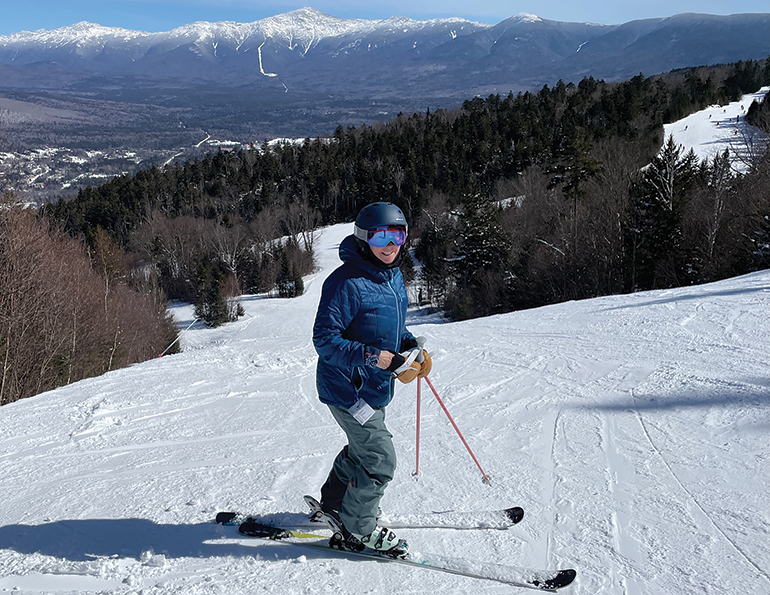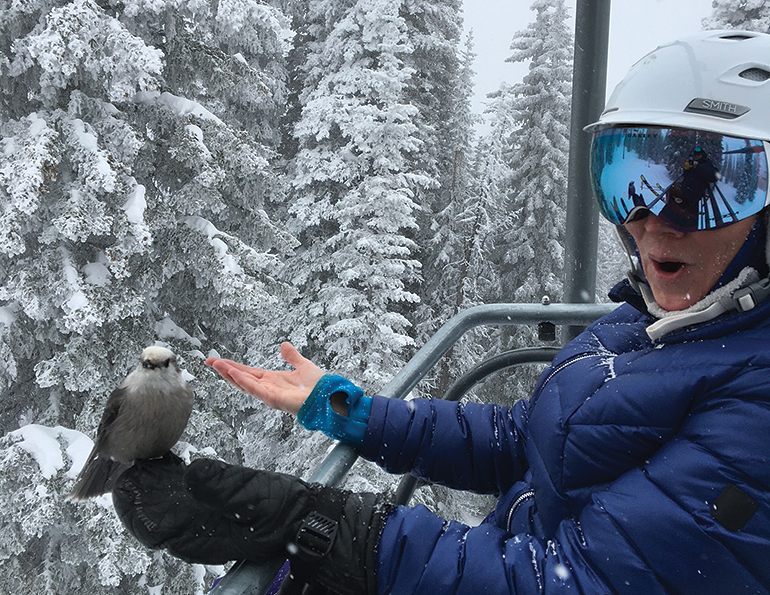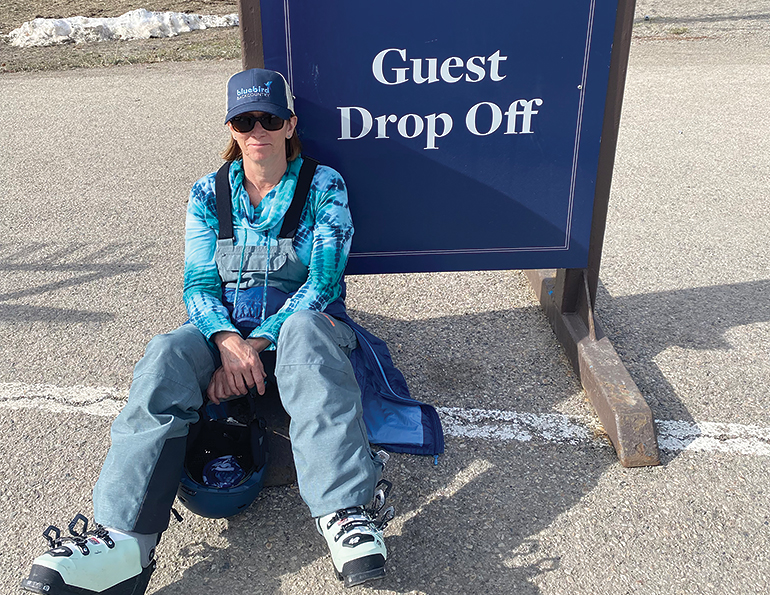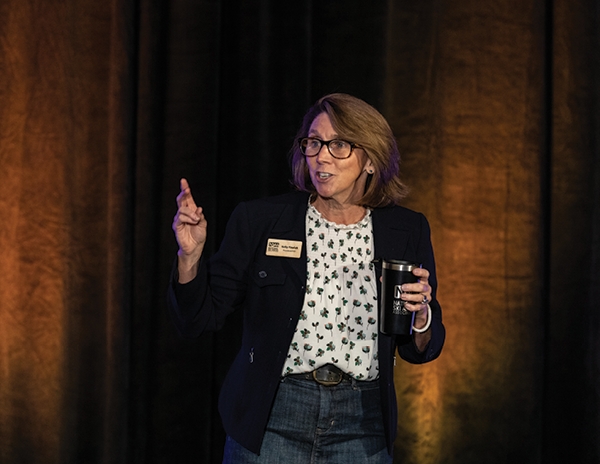Just before Kelly Pawlak started as president and CEO of the National Ski Areas Association (NSAA) in 2017, SAM publisher Olivia Rowan and editor Dave Meeker sat down with her to discuss her time as general manager of Mount Snow, Vt., and the new opportunity she was about to take on. It was clear Pawlak was going into the role with an open mind, eager to learn and share what she knows for the greater good of the industry.
Now, five years later, we spoke with her again to get a status update. Pawlak has accomplished a lot during a time when the industry—and the world around us, for that matter—has changed dramatically. When she started, growing visitation with new skiers and riders was the biggest challenge. Now, record skier visits have resorts scrambling to try and effectively service the renewed interest in snowsports brought on by the pandemic.
Priorities have shifted a bit, but Pawlak’s focus remains the same: keep the organization, and the industry, moving forward.
Olivia: One of your goals has been to visit as many ski areas as possible to gain a better understanding of what the membership is looking for from NSAA. How many have you gotten to?
Kelly: I have a map on the wall of my office that has all the ski areas in the U.S. on it. Whenever I visit a ski area, I put a pin on it [color-coded by year]. I average 20 to 30 ski areas a year. It takes a lot of time [laughs]—I’d love to say that I’ll go to every ski area by the time I retire. That may not be feasible, but I’m an optimistic person.
 By visiting 20–30 ski areas a year, like Bretton Woods, N.H., (pictured) Pawlak can touch base with NSAA members and learn about their needs.
By visiting 20–30 ski areas a year, like Bretton Woods, N.H., (pictured) Pawlak can touch base with NSAA members and learn about their needs.
Olivia: What are some of your more memorable visits?
Kelly: Every ski area I go to is memorable because they’re all so unique. But off the top of my head, going to the Southeast was super enlightening for me. That was in December 2019, and I did 10 ski areas in like four days. It was so interesting to see because I had no idea that all of these ski areas even existed before I started here and how quickly they can make snow and how passionate their guests are about their product. Each one I went to, I could quickly home in on what their secret sauce is. So that was cool.
Dave: I agree. When I first started at SAM and started gaining a more holistic view of the industry, learning about the Southeast, the high elevations of some of the ski areas, and how quickly they can make a ton of snow to respond to short windows—I had no idea.
Any other memorable visits?
Kelly: The Midwest has been awesome. Going to Perfect North last year was a highlight for me. I was able to see how they embrace their Olympic athletes at an event the whole community came out for. The tubing operation is top notch, with a control center like the Starship Enterprise. I had the grand tour in my ski boots with [general manager] Jonathan Davis and then lost my car for an hour-and-a-half in the massive parking lot; I had blisters on my feet by the time I left, but I had the best time ever.
There’s such pride in every single person I met at Perfect North. They showed me around their workspace. They got into the details. People were telling me they’ve been there 20 years, 30 years. It was just inspiring to see how much they loved the place where they worked.
These visits are definitely the best part of the job. And it doesn’t matter how big or small the ski area—everywhere you go, you meet amazing people and their stories are unique.
Dave: During your visits, do the ski area leaders take the opportunity to share their ideas or concerns? Do you ask? Or is it more casual?
Kelly: A lot of times, I get the full tour and they show me things they’re really proud of, which is great. I try to always remember to ask, “What do you need from NSAA? What can we do better?” And they do give me input.

 Pawlak chirps with the locals at Steamboat, Colo., (top) and steps in the shoes of the guest at Sun Valley, Idaho (bottom).
Pawlak chirps with the locals at Steamboat, Colo., (top) and steps in the shoes of the guest at Sun Valley, Idaho (bottom).
Dave: Speaking of input, you’ve always embraced feedback from mentors to, as you said, keep you sharp. Since you started at NSAA, who do you go to for guidance?
Kelly: Well, the NSAA staff have been probably the number one because there’s a lot of longevity here and they just know so much. Every single day they’re coaching me and helping me.
The big shift for me was having a board of directors. Tim Silva hired me, and when I first started, I was drinking from a fire hose and Tim is just this calming, big picture type of guy. He taught me that you can have a more quiet, gentle approach. I’d never worked for a person like that, and I’ve learned a lot from him. Win Smith is another. He really pushed me to understand government affairs better. Alan Henceroth became board chair right when the pandemic hit. He was like the pandemic rockstar and is one of the most positive people, which we needed.
And Pat Campbell, our current board chair, was one of the first people that reached out to me. She asked us to continue to focus on our safety education, especially in lifts, and I thought that was great advice. She also suggested we strengthen our relationships with state associations and collaborate more. I wrote that down so I knew to get back to it. When the pandemic hit, we started having weekly calls with all the state association heads, which were invaluable—and we still have regular calls together. Pat was right.
Really, there are so many people on the board who have been super helpful.
Olivia: Five years ago, you said creating new skier days without just stealing market share was one of the biggest challenges facing the industry. What do you see as the biggest challenges now?
Kelly: I think sustainable growth is still a challenge for our industry. But it’s hard to make time to look 15 or 20 years down the road when we’re seeing an unprecedented amount of ski area visits right now. The challenge now is finding the workforce to support the skier visits and the services that our guests want.
We have a lot to figure out, but one of my favorite things to do is dig into the data we collect through the surveys we do. For us to have what many ski area operators described as a rollercoaster year last year weather-wise and natural snowfall below the 10-year average, but still have the most skier visits ever on record is like, “hmm, what happened?” Our growth committee is doing some work right now to understand the data and present it in a way that our membership can understand it and use it to try to set our industry up for continued success.
We have a strong relationship with our core guests, but still the largest portion of our revenue comes from the day ticket person. How can we better engage with them? What motivates them? I think if we can all carve out some time and energy to focus on that person, just like we do our season pass holders, we could build a stronger pipeline for the future. That includes youth, of course. And we need to focus on diversity because as our population shifts, it’s a great opportunity. As we diversify, our ski areas are going to be much more interesting and cooler, and we’ll cater to some things that we haven’t even thought about yet.
Olivia: Let’s talk about the pandemic for a minute. The ski industry’s response was remarkable, and “Ski Well, Be Well” was very successful. At what point did you realize how serious things were going to be and that NSAA had to really lean in to help?
Kelly: I’ll never forget, Stephen Kircher was in our office in February 2020 and said, “You better be watching this pandemic thing.” He was all over it. And sure enough, everything shut down. We started looking at what other industries were doing and seeing if we could do something similar. Stephen said that we all needed to get on the same page and figure out how to keep these ski areas open, and that was kind of the start of “Ski Well, Be Well.”
I think the Huddles you guys did were important. We’d take notes and then we would make calls. We were getting calls from our board—Bill Rock, Dave Norden, Tim Cohee, Jeff Kohnstamm, Chip Seamens. And those state association calls were so helpful. Without those, I don’t know how we could have found out as much information.
And there isn’t any industry out there that could have handled the pandemic better than ours did, in my personal opinion, because this is what we do every day: You walk into the ski area and you get ambushed by some sort of issue and whatever your plan is, it’s now out the window. So, when the pandemic hit, it was like, “Oh, this is bigger and different. But I have the tools to figure it out, because I just used them yesterday.” It’s an industry of problem solvers.
Olivia: How has NSAA evolved since you started?
Kelly: We developed a strategic plan in the first year or two I was here, and that’s been extremely helpful in keeping us focused and allows us to prioritize. The plan has evolved, and each year it gets stronger. It includes our goals and each year we measure those goals. For the most part, the big picture stuff is what drives us every day—safety, with a concentration on lifts; climate change; government affairs; workforce. Now, we’ve added DEI.
Dave: What do you miss most about working at a resort?
Kelly: I miss the people. I went to Mount Snow for [mountain ops director] Dave Moulton’s retirement party in November and it just reminded me of the second family that you have when you work at a ski resort. It seems like every ski area I go to, I could be riding the chairlift with a patroller or another staff member and I always hear them say, “You know, we have the best team here.” Everyone says that, and I love it.
I had withdrawals the first year. I literally had guilt. I would see that the lifts were down at Mount Snow for wind, and I had extreme guilt that I wasn’t experiencing the pain with them.
But that’s all gone now [laughs]. I love my weekends. I love my holidays.
Dave: [laughs] So, what do you miss least?
Kelly: The stress. It was wearing me down. If I went back today and jumped back in that role, I would remind myself to work smarter, not harder.
Olivia: As you look back on the past five years, what are you most proud of?
Kelly: I feel the most pride in the team here. I’m proud that we now have the Mountain Foundation because I think it’s going to be important that we do more to support people in their education. And, personally, I am proud of our work in diversity, equity, and inclusion. For me personally, it’s sad that it took me 50-something years to focus on this and to understand my privileges and how I fit into the larger community and society. And I hope I can inspire a few people to dig in and understand that it’s important—because we need to do the right thing but also because I really truly believe our resorts can be more interesting and attract more people and be more sustainable if we really try to be more inclusive and welcome people who are currently underrepresented to our resorts.






